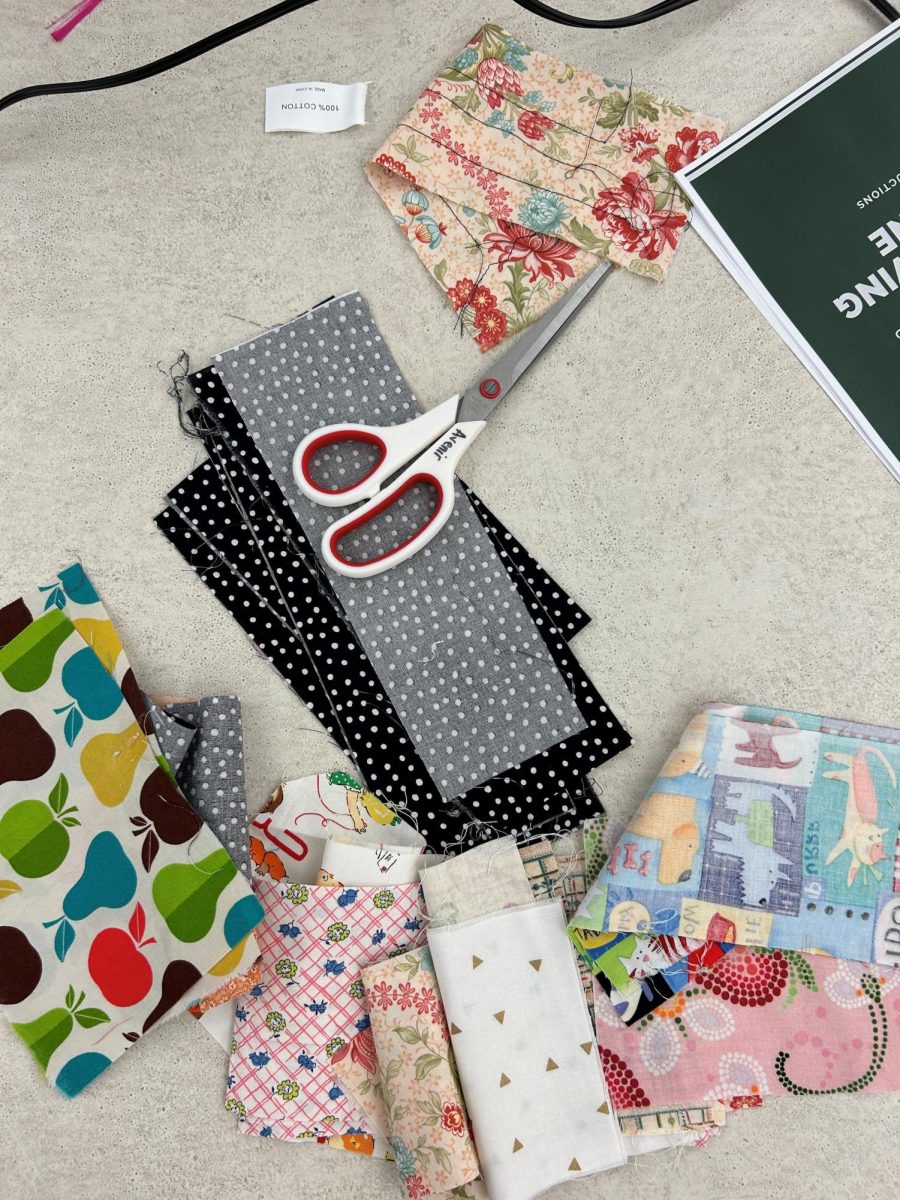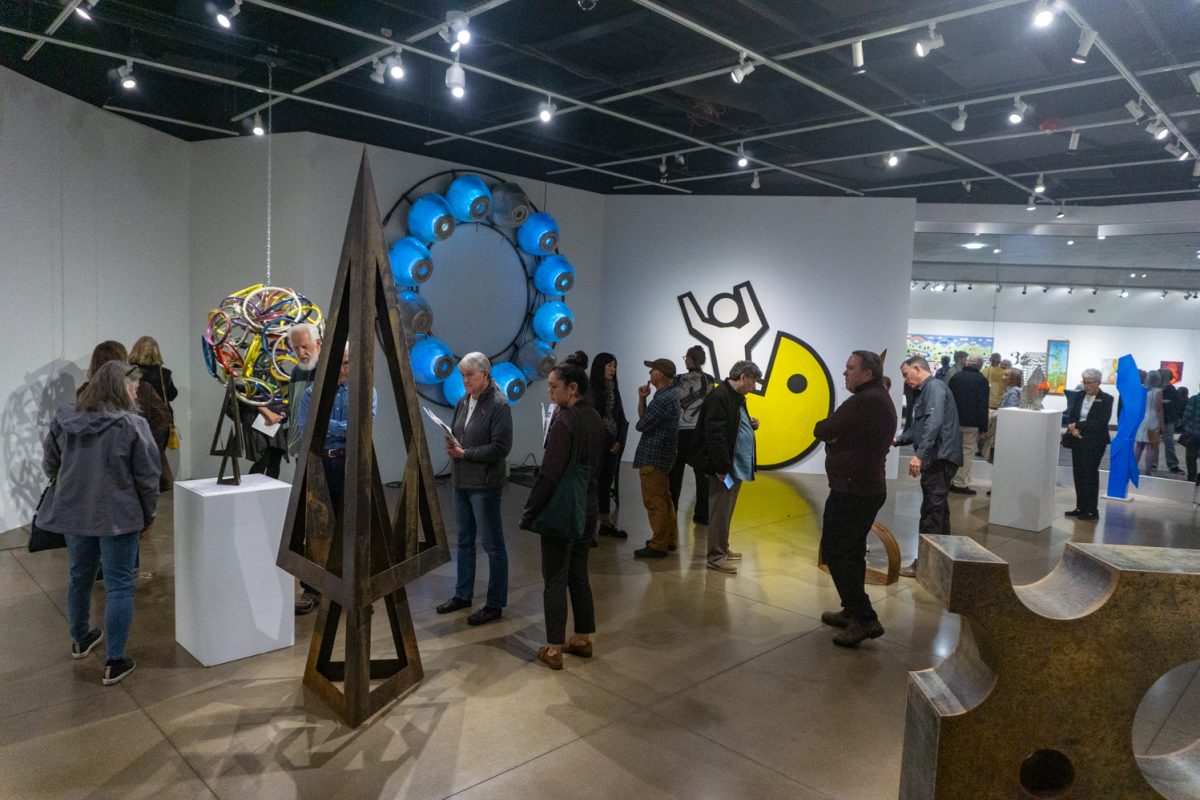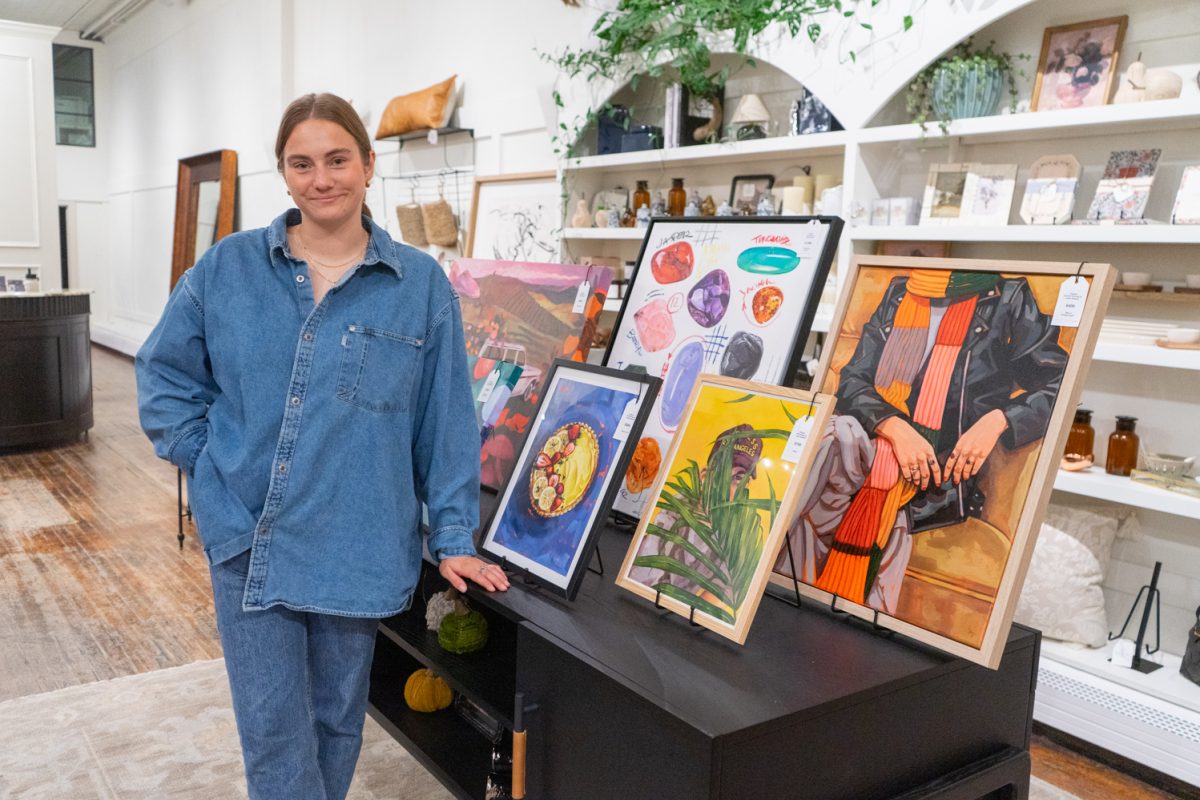On the first Saturday of every month, a quiet classroom inside the Avenir Museum of Design and Merchandising transforms into a lively creative space. Thread, fabric scraps and sewing needles scatter across tables as Colorado State University students gather for the Make & Mend workshop: a free, hands-on event where sustainability meets skill building.
Led by Sarah Lillis, the education programs coordinator at the Avenir Museum of Design and Merchandising, the workshops offer a hands-on, creative response to the fast fashion issue at CSU, teaching students to repair clothing through embroidery, sewing and patching.
“The workshop is kind of like an open studio space,” Lillis said. “What people need mended kind of dictates what they learn, which can be anything from threading a needle and sewing a tear.”
As fast fashion’s environmental toll rises — with 92 million tons of the 100 billion garments produced annually ending up in landfills — small-scale efforts like mending are gaining traction. For Generation Z, a group especially vulnerable to the fast fashion cycle in the pursuit of staying trendy, the workshop offers a refreshing and innovative alternative.
Lillis said she sees mending as a growing, sustainable trend — one that is gaining traction thanks to social media.
“I see a lot of interest among students; it’s definitely becoming trendier,” Lillis said. “A lot of young people come in saying, ‘I saw this (Instagram) reel and wanted to try it,’ which I think is great.”
Still, outreach remains a challenge.
“We’ve done flyer campaigns in the dorms and cafeterias, and we advertise on Instagram,” Lillis said. “But it’s still tricky to get in front of student eyes.”
“Fast fashion has been talked about so much that the more you talk about it, the less people will want to do something about it. … Instead, we should focus on making sustainable fashion more appealing and accessible.” –Ruoh-Nan Yan, CSU design and merchandising professor
Despite this, attendance has steadily grown, with 25 to 30 students participating monthly. A 2022 National Endowment for the Arts survey reported a 26% increase in weaving, crocheting and sewing between 2020 and 2022, suggesting more adults are seeking creative outlets that also support sustainability.
This increase could be due to challenges and hesitations that come from other sustainable alternatives, like thrifting.
“I just like new things,” said Brianna Grice, a sociology major at CSU on why she doesn’t like thrifting and prefers stores like TJ Maxx and Hollister.
Grice, like many people, opts for new clothes because it feels trendier and more convenient.
Professor Ruoh-Nan Yan, who works in CSU’s department of design and merchandising, studies consumer behavior and overconsumption. She said social media-driven trends are fueling a culture of overconsumption, especially among younger students.
“For me, microtrends are, like, for a short period of time; this is very trendy.” Yan said. “Then that trend ends, and people start buying something else. … Then the clothes they bought — because they were trendy — just get thrown away.”
The pressure to keep up with fast-changing styles combined with targeted marketing drives consumer habits that are both environmentally and ethically unsustainable.
Elinor Stutler, a health and exercise science major, said that social media heavily influences her clothing choices.
“Trends from social media influence my clothing choices a lot,” Stutler said. “That’s what everyone’s wearing, and so it’s really hard to differentiate from that.”
Stutler said she prefers thrift stores but has recently found that prices have increased, making it less affordable.
“I like thrift stores because then I don’t feel bad about ruining already used clothes,” Stutler said. “But even thrifting is getting expensive. … I saw a $50 pair of jeans at one shop, and that’s just ridiculous.”
In addition to increasing prices, CSU student Xenia Guardado Rivera said she finds sizing as a barrier to thrifting.
“The sizing is kind of limited; the cuter things are just going to be smaller than you need,” Rivera said. “I couldn’t shop for jeans thrifting. What I want to wear, I probably couldn’t find there.”
Yan believes the current approach to discussing fast fashion with young people is ineffective, as it often relies too heavily on lecturing about its consequences rather than promoting practical alternatives.
“Fast fashion has been talked about so much that the more you talk about it, the less people will want to do something about it,” Yan said. “Instead, we should focus on making sustainable fashion more appealing and accessible.
“To (young people), it just feels like preaching. The more we repeat the message, the more numb they become.”
Lillis’ workshop tackles these challenges head-on, offering a pragmatic way to combat fast fashion by teaching practical skills and extending the life of clothing. While its environmental impact may be modest, the workshop empowers students to take action in a feasible, creative way.
“I just want to continue building a solid foundation,” Lillis said. “The goal is to start small and grow a community where people share their knowledge.”
Ultimately, Lillis said she hopes the workshop fosters a community where students can teach and learn from one another, stitching together something meaningful one repair at a time.
Reach Yoleni Paulo at life@collegian.com or on social media @CSUCollegian.












